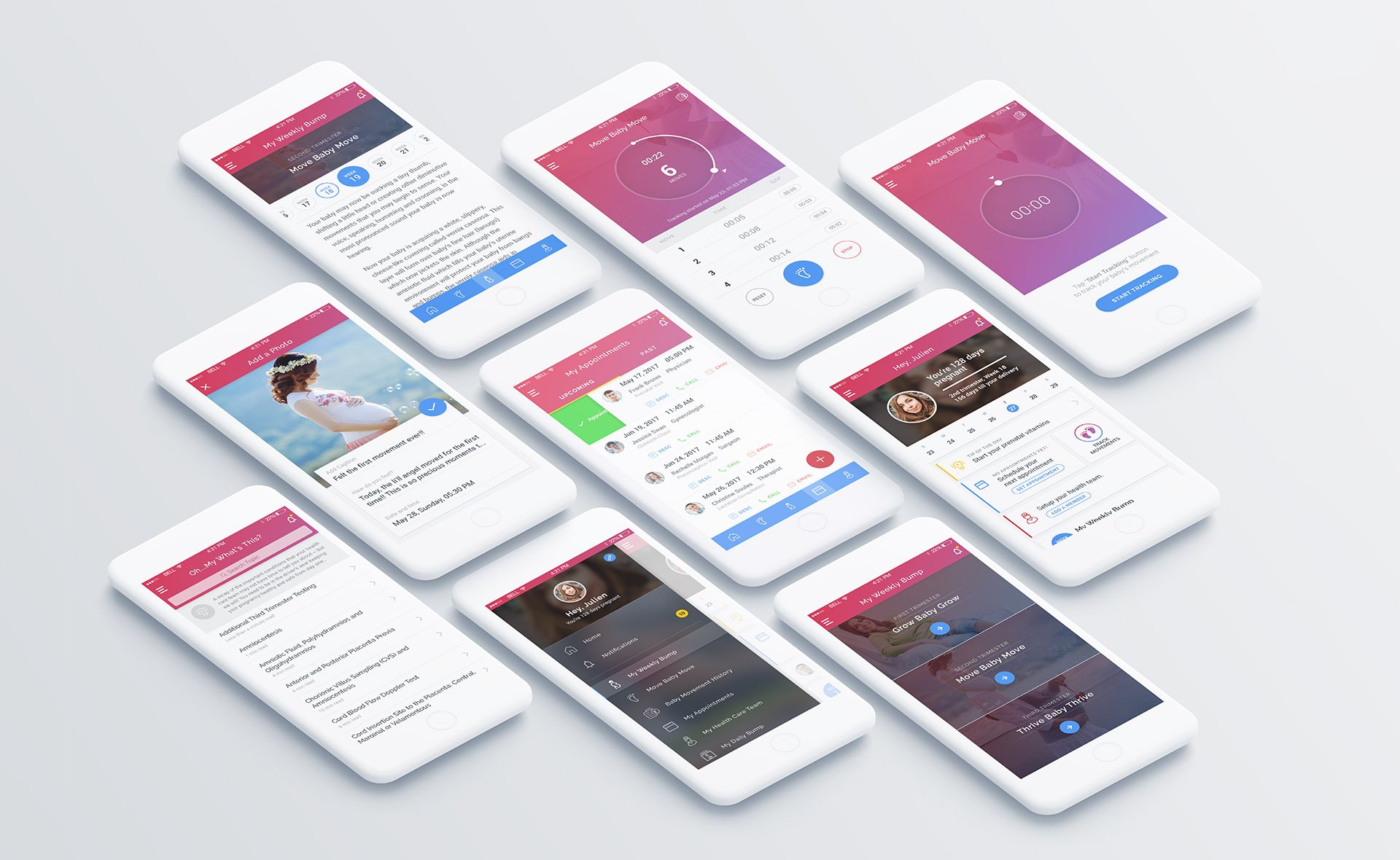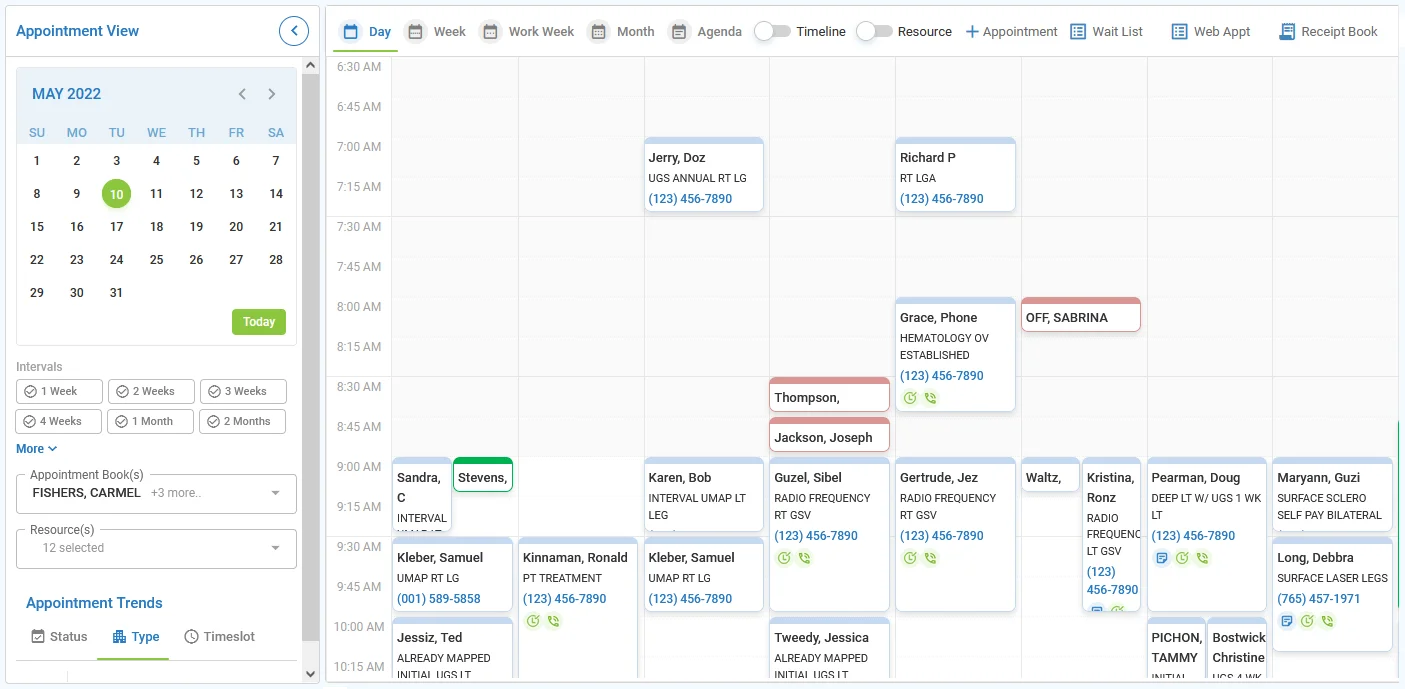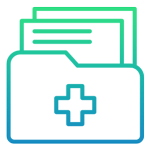Not Every App Has What It Takes – Here Are The Top Features To Make Your HealthTech App Successful
Table of Contents
What are successful HealthTech apps doing right, that the others aren’t?
As a leading developer of successful apps for a global clientele, Digicorp is at the forefront of innovation through design and development in the HealthTech industry. By collaborating closely with healthcare providers, professionals, and nonprofit organizations alike, we have come to understand that most HealthTech apps fail because of poor feature engineering. In this blog, we help you identify the key features that are critical to making your HealthTech app a successful one.
Start with the Purpose
It is one thing to build an app. It is another thing to build it with a purpose.
To give you a sense of how purpose figures into the process of app development, here are the most common HealthTech app categories in the U.S. between 2015-2026 (including projections).

As you can see, each app category solves a specific problem that is self-explanatory from its name. While features may vary across a wide range of HealthTech apps available in the market, their goals converge on serving a few key stakeholders or user groups in the industry. These are:

Patients and Patient Families

Doctors and Healthcare Providers
Note that your app doesn’t need to cater to only one of these user groups. In reality, most HealthTech apps have to cater to both user groups because of the complexity of the problem that they are solving.
Tying the purpose of your app to the different user categories comes in handy while identifying the right combination of features for your HealthTech app. Hence, in this blog, we have categorized the features into the two user groups (as mentioned above) for the ease of understanding of our readers.
#1 Feature Selection for Patients
What do patients look for in a HealthTech app?
The three most basic features that patients seek in a HealthTech app are –
Scheduling/canceling/rescheduling medical appointments
Downloading prescriptions
Accessing medical records
However, an Accenture study shows that only 11% of the hospital apps offer any one of the above features. Further, if the past is any indicator, hospitals have been historically able to engage only 2% of their patients on HealthTech apps. Digicorp has been known to build highly engaging patient-centric modules for HealthTech apps. An example is the Patient Portal that we built for a leading healthcare IT firm in the U.S.
Case Study
Patient Portal for a Leading Healthcare IT Firm in the U.S.

When an acclaimed healthcare IT company in the U.S. decided to foray into EHR Market, they found the perfect partner in Digicorp. Of the many features embedded in the software that was built from scratch by Digicorp team, an important one was the Patient Portal.
The Patient Portal is a web application that allows patients to log in on their own and view/download their own data which was created during their visit/s to the facility.
It has features where patients can:
- Request an appointment
- Add and modify the demographics, family health history, pharmacies, insurance details
- Fill up consent forms and questionnaires independently even before visiting the clinic
- View past medical records based on the visits made to the facility, and
- Make payments.
Read the full case study here.
With consumers becoming more and more health-conscious and tech-savvy, and with the onset of the global COVID-19 pandemic in 2020, a few other features of HealthTech apps also gained popularity among patients.
1. Well-being Management
The effect of the pandemic is evident in the way consumers adopted healthcare apps to better manage their physical well-being. About 54% of HealthTech apps in 2020 were focused on the general well-being of consumers like fitness, lifestyle, and diet. Downloads of Health & Fitness apps grew by 67% towards the end of March 2020, and in May 2020, these apps registered 48% more user sessions than the annual average.
The challenge of virtual well-being management is further compounded when the target users are differently abled. We took this challenge head-on when we partnered with David, a physical trainer with over 15 years of experience in caring for autistic children. He reached out to us in 2017 to build a wellness app that can transform the lives of millions of children with special needs.
Case Study
Exercise Buddy App by Digicorp

The Exercise Buddy app is a visual exercise system that empowers autistic and other neurodivergent individuals to successfully engage with physical activity, which is an important part of their play and overall learning.
Equipped with evidence-based practices for teaching, a fitness professional, educator, therapist, or parent has everything they need to assess performance and create custom visuals and workouts. Exercise Buddy levels the playing field for students with autism to engage in exercise, gain physical knowledge & skills, and increase independence so they can enjoy the benefits of physical activity like their peers.
Read the full case study here.
2. Patient Data Management
More than 70% of patients believe that “it would be useful for their physician to access their health data on a mobile app.” EHR and EMR management apps have gained immense popularity due to the inherent complexities of medical data. Managing other patient data like demographic data, travel data, family history of medical conditions, and data related to lifestyle and mental health have also gained ground of late.
Since the EHR/EMR apps typically have a dual purpose – i.e. they interface with both patients and healthcare providers, we have covered it in detail in the next section.
3. Virtual Care
Chronic Health Condition Management (e.g. diabetes, heart issues, cancer, HIV, etc.) and Telemedicine are areas that have gained traction, especially with the onset of the pandemic. Health condition management apps comprised 47% of medical apps in 2020, up from 28% in 2015. A study by McKinsey shows that the adoption of telemedicine among U.S consumers has risen from 11% in 2019 to 46% at the end of 2021.
Virtual care can also be accomplished through the dissemination of niche information and providing tools in the hands of patients for specific health conditions. This is exactly what we did with MePReg, as explained in the case study below.
Case Study
MePreg App for Project Alive and Kicking by Digicorp

The idea behind MePreg was to build an all-in-one mobile app to help expecting mothers manage their pregnancy from day one by checking off pregnancy highlights, capturing daily bump photos, scheduling appointments, browsing the latest pregnancy information, meditating, and tracking their baby’s daily movements all in one place. For this, we went for an out-of-the-box solution by segregating the content into the trimesters of pregnancy since each trimester has its own unique symptoms and challenges.
Further, we created information pathways connecting the product features with the awareness among target users about various potential risks like stillbirths, preterm birth, etc., and how to mitigate these risks effectively. This back-end user-flow and product wireframe was complemented by an intuitive and easy-to-use front-end that deployed intensive color therapy to make the look and feel soothing and calming for expecting mothers.
Read the full case study here.
4. Social Features
Interestingly, a study revealed that more than 56% of users believed that in-app social features “increased their belief that other people wanted them to lead a healthy routine.” Furthermore, it is only natural that people rely on talking to each other and getting recommendations from each other regarding shared health conditions, healthcare providers, HealthTech apps, etc. via virtual forums and communities.
Now that we have covered the key patient-centric features for HealthTech apps, let’s take a deep dive into the features that doctors and healthcare providers are most interested in.
#2 Feature Selection for Doctors and Healthcare Providers
Let’s start with an interesting fact.
According to a study, nearly 93% of doctors believe that HealthTech applications can aid in bringing positive change in a patient’s health outcomes. Furthermore, the study also revealed that 80% of physicians use mobile technology to deliver patient care.
Interestingly, many of the patient-facing HealthTech app features are also relevant when it comes to doctors and healthcare providers, even though the complexity of functionalities and the user interface need to change drastically. One such example is the EMR/EHR module.
Case Study
EMR Module for a technology-enabled healthcare business service company by Digicorp

The EMR module we built is an end-to-end product that consists of numerous functions and features like:
- Scheduling a patient appointment
- Viewing all appointments that the doctor/provider has for today
- Adding diagnosis and fees for any patient logged in the facility
- Filling up the consent form and questionnaire
- Creating an encounter note for a patient visit
- Selecting a procedure that is to be performed or which is already performed on the patient
- Creating a prescription for the patient
- Adding the patient’s current medications and allergies
- Taking vitals across specific time intervals
- Ensuring validations for drug interactions
- Adding/editing/deleting the inventory information from any module of any device, and having the data synced based on the facility, automatically (Inventory Web Module)
- Managing inventory using barcode scanning
- Creating stock entries whenever a new order is placed and linking it to the specific patient who will consume it
- Carrying out Stock Adjustment in case of errors
- Reordering the same item which the user previously ordered by clicking on a single button
The main advantage of our design is that every step can be executed from the various screens with which a user is interacting. For example, a user can create prescriptions from notes, patient charts, dashboards, health summaries, and many other screens – so that users can accomplish their goals with little or no cross-screen navigation.
This system is currently used by more than 250 organizations/independent practices having multiple facilities. Users can also customize the system by adding the logo of their practice and creating their own sets of questions and choices for answers.
Read the full case study here.
Another example where we built a HealthTech app with a dual interface for patients and healthcare providers is the case of Therapeutix.
Therapeutix recognizes that 99% of a patient’s life takes place outside of the doctor’s office. That’s why they reached out to Digicorp to build software that maps the patient’s entire journey. This way, the system can catch diseases even before they happen and act like a smoke alarm for the patient’s health.
We built the full suite of functionalities for the users of Therapeutix, where they can not only track and manage their health-related data (EMR/EHR) but also benefit from third-party APIs (for integrating with apps like CalorieKing and Radar) to track day-to-day food and nutrition data.
Doctors can log in to the app and perform various activities like:
- View their profile information and the ratings and reviews received
- Edit profile information, like fees charged, location, specializations, etc.
- Manage appointments, view appointment calendar for day/week/month/year, view upcoming appointments for the day
- Manage schedules according to their availability by adding/editing dates and time slots on which they wish to be available
Apart from patient-centric applications, doctors and healthcare providers also require other features to help them with administrative and accounting burdens. Below, we have given examples of the same using the various modules that we have developed for a leading healthcare IT firm in the U.S.
Case Study
Administrative and Accounting Modules for Practice Management Software (Cloud-based certified EHR) by Digicorp

Revenue Forecaster
An application that allows practices to predict how their financial year would look based on procedures performed in the past years or months. This also allows them to create multiple revenue scenarios for future reference.
Payment (Bill Pay)
This application allows practices to receive bills from customers in the form of EMI or upfront payment, as well as send customer statements for the visit by email.
Customer Portal
This web application is for onboarding practices and their different types of users. This web application also allows clients’ internal teams to access all requests by other practices.
This application also has a section where different categories of users can watch training videos added specifically by the client for training purposes
BI Dashboard
BI Dashboard is mainly used to understand the different KPIs of practices like Financial analytics, Schedule analytics with their trends and appointment prediction, collection and charges, patient population by zip code, age, and more.
Document Preview
Used to preview various medical and non-medical documents.
There you go – we have covered the most important features to add to your HealthTech app along with examples and case studies to demonstrate their usage and applications!
Conclusion
The healthcare industry is one of the biggest and fastest growing in the world. The US healthcare industry alone was valued at $3.8 trillion (around 18% of the country’s GDP) in 2021. With the global HealthTech app development receiving over $10 billion in funding in the last couple of years, the significance of healthcare technology, especially HealthTech app development, was never more apparent.
If you have been looking to build a HealthTech app, now is the time to take the plunge! Selecting the right features and executing them with finesse, agility, and intuitive design is Digicorp’s forte. With over a decade and a half of client satisfaction to back our position as a market leader, we are your perfect partners to make world-class HealthTech apps that solve mission-critical problems and make it to the top.
Learn more about our capabilities, offerings, projects, and client testimonials by visiting digi-corp.com, or reach out to us at sales@digi-corp.com.
Reference Credits:
https://www.softermii.com/blog/must-have-healthcare-app-features-with-examplesNachiket Patel
Co-Founder, VP (DIGICORP)
Nachiket Patel
- Posted on September 16, 2022
Table of Contents





